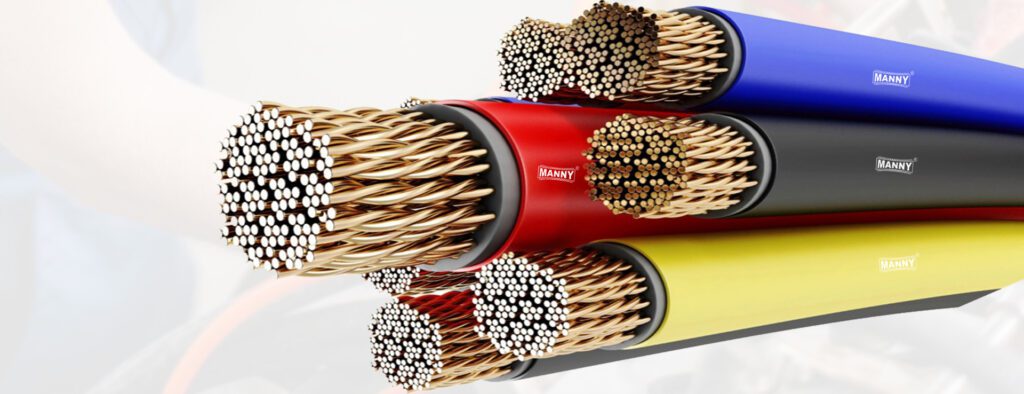Understanding the Differences Between FR and FRLSH Wires: A Comprehensive Guide

When it comes to electrical wiring in home construction, safety is a top priority. This is why it’s crucial to understand the differences between Fire Resistant (FR) and
Fire Resistant, Low Smoke Halogen (FRLSH) wires. These two types of wires are designed to enhance safety in various environments, but they have distinct
properties and applications. Knowing these differences can help ensure compliance with safety standards and make informed decisions for your projects.
Definition of FR and FRLSH Wires
FR Wires: FR stands for Fire Resistant. These wires are designed to resist fire and prevent the spread of flames in case of an electrical fault or fire outbreak.
FRLSH Wires: FRLSH stands for Fire Resistant, Low Smoke Halogen. These wires not only resist fire but also emit low levels of smoke and halogen when exposed to high temperatures, reducing the risk of toxic fumes.
Understanding these definitions is essential for selecting the right wire type to meet safety and compliance requirements in different environments.
FR Wires: Characteristics and Applications

Composition and Materials Used in FR Wires
FR wires are constructed using high-quality insulating materials that can endure high temperatures without degrading.
Common materials used include Polyvinyl Chloride (PVC) and Cross-Linked Polyethylene (XLPE).
PVC is known for its good insulation properties and cost-effectiveness, making it a popular choice in many applications.
XLPE, on the other hand, offers excellent thermal resistance and durability, which enhances the fire-resistant capabilities of the wire.
Fire-Resistant Properties and Performance Standards
FR wires are specifically designed to maintain their integrity when exposed to fire.
This means they can continue to operate for a certain period during a fire, providing crucial time for evacuation or fire suppression efforts.
They are tested against performance standards such as the IEC 60331, which measures their ability to withstand fire conditions.
This standard ensures that the wires can maintain circuit integrity for a specified duration, typically 90 minutes, under fire conditions.
Common Applications
FR wires are versatile and used in various settings, including residential buildings, commercial spaces, and industrial environments.
In residential buildings, they are often used for general electrical wiring to enhance fire safety.
In commercial and industrial settings, they are used in critical circuits like fire alarms, emergency lighting, and power supplies for safety equipment.
These applications are chosen to limit the spread of fire and maintain essential services during emergencies.
Advantages and Limitations of FR Wires
The primary advantage of FR wires is their ability to prevent the spread of fire, providing enhanced safety.
They are relatively easy to install and are cost-effective, making them a popular choice for many applications.
However, a significant limitation is that while they resist fire, they do not address the issue of smoke and toxic gas emissions.
In enclosed spaces or areas with high occupancy, the smoke and gases released by burning insulation materials can be hazardous to health, posing risks during
fire incidents.
FRLSH Wires: Characteristics and Applications

Composition and Materials Used in FRLSH Wires
FRLSH wires are made with specialized materials that produce low smoke and halogen emissions.
The insulation materials typically include halogen-free compounds that release minimal smoke and non-toxic gases when burned. These materials are specifically engineered to meet stringent safety standards,
reducing the risk of smoke inhalation and toxic gas exposure during a fire.
Fire-Resistant and Low Smoke/Halogen Properties
In addition to their fire-resistant capabilities, FRLSH wires excel in minimizing smoke and halogen emissions.
This is crucial in preventing the inhalation of toxic fumes, which can be more dangerous than the fire itself.
The low smoke property ensures better visibility during evacuation, while the halogen-free nature reduces the release of corrosive and toxic gases.
Performance Standards and Testing Criteria
FRLSH wires adhere to stringent performance standards, such as the IEC 60332-3, which evaluates the wire’s behavior in a fire scenario.
This includes tests for smoke density and toxicity levels. These standards ensure that FRLSH wires provide maximum safety by maintaining circuit integrity, minimizing smoke production, and limiting toxic emissions.
Common Applications
FRLSH wires are ideal for use in healthcare facilities, public buildings, and transportation systems.
In healthcare facilities, they ensure the safety of patients and staff by reducing the risk of toxic fumes.
In public buildings and transportation systems, where large numbers of people are present, the low smoke and halogen properties enhance safety during fire emergencies.
Advantages and Limitations of FRLSH Wires
FRLSH wires provide superior fire safety by reducing smoke and toxic emissions. This makes them particularly suitable for high-occupancy and enclosed environments.
However, they tend to be more expensive than FR wires and may not be necessary for all applications. The higher cost is often justified by the enhanced safety features they offer.
Key Differences Between FR and FRLSH Wires
Fire Resistance and Heat Release Rates
Both types of wires resist fire, but FRLSH wires typically perform better in minimizing heat release and preventing the spread of fire.
Smoke Density and Toxicity Levels
FRLSH wires emit significantly lower levels of smoke and toxic gases compared to FR wires, making them safer for use in enclosed and populated spaces.
Installation Requirements and Regulations
FRLSH wires often have stricter installation requirements and must comply with more rigorous safety regulations, especially in public and high-risk areas.
Cost and Availability Considerations
FRLSH wires are generally more expensive and may have limited availability compared to FR wires. However, their enhanced safety features often justify the higher cost.
Factors to Consider When Choosing FR or FRLSH Wires
Risk Assessment and Fire Safety Requirements
Consider the specific fire risks associated with your project and choose the wire type that offers the best protection.
Building Codes and Local Regulations
Ensure that the chosen wire type complies with local building codes and safety regulations to avoid legal issues and ensure safety.
Environmental Impact and Sustainability Concerns
Evaluate the environmental impact of the wires, including their production, use, and disposal. FRLSH wires are often more eco-friendly due to lower emissions.
Project Budget and Cost-Effectiveness
Balance the cost of the wires with the safety benefits they provide. While FRLSH wires are more expensive, their benefits in high-risk environments may outweigh the cost.
Installation and Maintenance Guidelines
Proper Installation Techniques for FR and FRLSH Wires
Ensure proper installation by following manufacturer guidelines and safety standards to maintain the integrity of the wires.
Precautions and Safety Measures
Implement safety measures during installation to protect workers and prevent accidents.
Maintenance and Inspection Requirements
Regularly inspect and maintain the wires to ensure ongoing safety and performance.
Disposal and Recycling Considerations
Dispose of or recycle wires responsibly to minimize environmental impact and comply with regulations.
Future Trends and Advancements
Emerging Technologies and Materials for Fire-Resistant Wires
Stay informed about new materials and technologies that enhance fire resistance and safety.
Industry Standards and Regulatory Updates
Keep up with changes in industry standards and regulations to ensure compliance and safety.
Sustainability Initiatives and Eco-Friendly Alternatives
Support sustainability initiatives by choosing eco-friendly wire options and promoting environmentally responsible practices.
Conclusion
In summary, selecting the right type of wire—whether FR or FRLSH—depends on your specific needs and the safety requirements of your project. By understanding
the key differences and considering factors like fire safety, environmental impact, and cost, you can make informed decisions to protect lives and property. Always
prioritize safety and compliance to ensure the best outcomes for your electrical installations.



